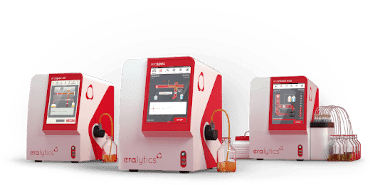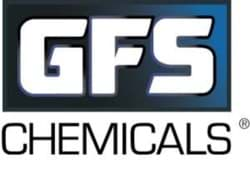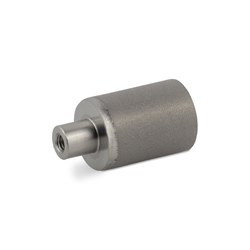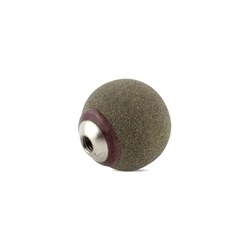Measuring Foaming Tendency
In order to perform foam stability and foaming tendencies of lubricant oils according to standardized methods such as ASTM D892 and D6058 and IP 146 a tightly controlled fl ow of gas (typically air) is dispersed into a measured volume of the test liquid at pre-determined conditions of time and temperatures. The ability to create foam is directly associated to several factors, among them the nature of the oil and the effi ciency of the diffuser to entrain air in the lubricant formulations. This property directly impacts the quality of the analysis as careful calibrations are key in the overall performance of the tests.
Scope of the Analysis
The determination of the foaming characteristics of lubricating oils at 24°C, 93.5°C and 150 °C, empirically rate the foaming tendency and the stability of the foam that might be formed in normal operations. The system is also capable of performing Foaming Characteristics at any temperature and regime conditions with equal ease. In both standard methods FoamDDI eliminates confusion on procedure interpretation and guarantees compliance with test temperature requirements as well as compliance to the exact defi nitions of kinetic and static foam performing the measurement at the correct times.
StoneDDI Design Characteristics
Stone Digital Detection Imaging Apparatus (StoneDDI), can easily provide for unbiased and reliable measurements of pore size distribution and flow rates of plastic, ceramic and metallic diffusers of different shapes and dimensions. StoneDDI consists of a system for sample conditioning, and testing. It is equipped with a high-resolution CCD camera, and a reader unit which possesses a state-of-the-art optics which together with the VISAYA FoamDDI algorithm accurately determines pore diameters and size distribution of them to unambiguously and reproducibly calibrate them. The high precision and accuracy of the calibration guarantees the precise control of air flows and procedural steps, demanded by the standard methods with minimal operator manipulation and the elimination of the critical timing involved in the manual assessment. Calibrations are characterized by a high repeatability and reproducibility. The automatic system produces simultaneously plots, pictures and videos allowing to visually and integrally characterize your analyzers.
The calibrator automatically measures the pressure in Pa, converts it in mm H2O and the Diameter is calculated by the equation: D = 8930/(PmmH2O-80) for metallic diffusers utilizing isopropanol as the diffuser medium. The permeability is considered to be equal to the Flow Rate measured at 2.45 kPa of pressure.
The flow meter calibration can be visually expressed as the reading in mm vs. the flows measured at center of flow.
| Applicable Test Methods |
ASTM D892 |
| Diffuser Types |
Non-metallic Spherical, metallic Cylindrical |
| Display Units |
Flow mL/min, Pressure kPa |
| Detection Method |
Patent Pending CCD Digital Detection and Mass Flow Meter over Electronic Pressure Control |
| Precision |
+/- 0.06L Flow, +/- 0.08 kPa |
| Optical Design |
Patent Pending Optical Arrangement |
| Light Source |
LED Red (600nm) |
| Measuring Time |
Operation mode dependent |
| Calibration |
Flow, Pressure, and Camera |
| Display |
10.1” Projective Capacitance Touch (Multi-Touch) |
| Interface |
Ethernet x2, USB 3.0 x1, USB 2.0 x4, HDMI, VGA, USB Printer, USB Mouse, Keyboard |
| Memory / Storage |
64 GB SSD Storage |
| Humidity |
Up to 85% Non Condensing |
| Temperature Range |
15° to 35° C |
| Power |
StoneDDI: 110/120VAC, 50/60Hz 3.2A or 220/230 VAC 50/60 Hz 1.6A |
| Materials Requirements |
40 psi instrumental grade air |
| Space Requirements |
80 mm (3”) on Sides and Back, Sides 1”, Back 6” |
| Dimension |
StoneDDI: 508 x 228 x 635 (20 x 9 x 25”) |
| Gross Dimensions & Weight |
StoneDDI: Weight 10 Kg. (22 lbs.) |
There are no reviews yet
Recently viewed products
StoneDDI – Automated Diffuser Stone Calibrator
| SKU | StoneDDI |
| MPN | StoneDDI |


























